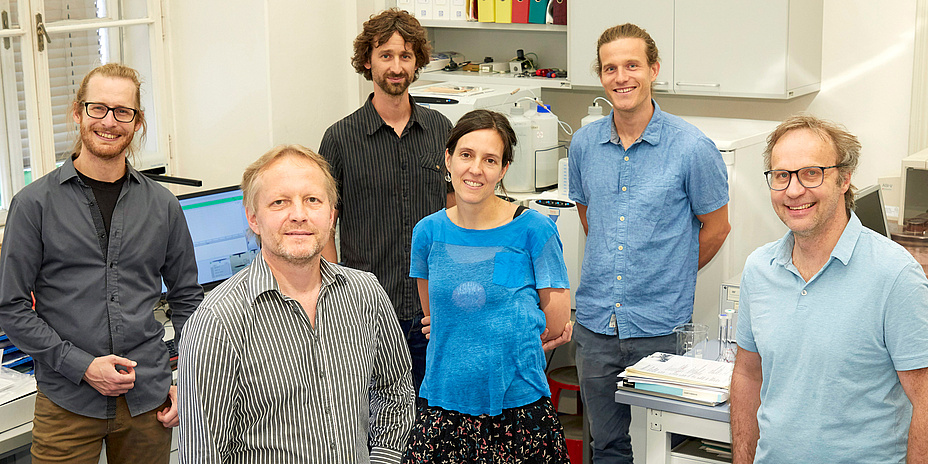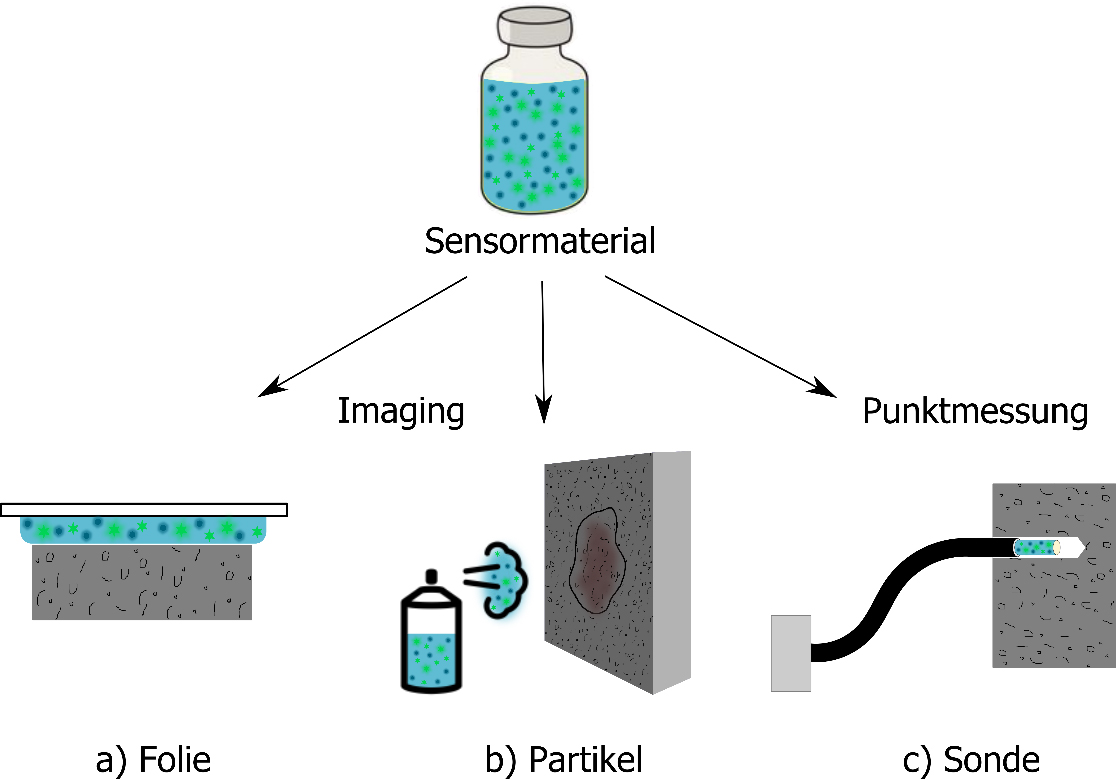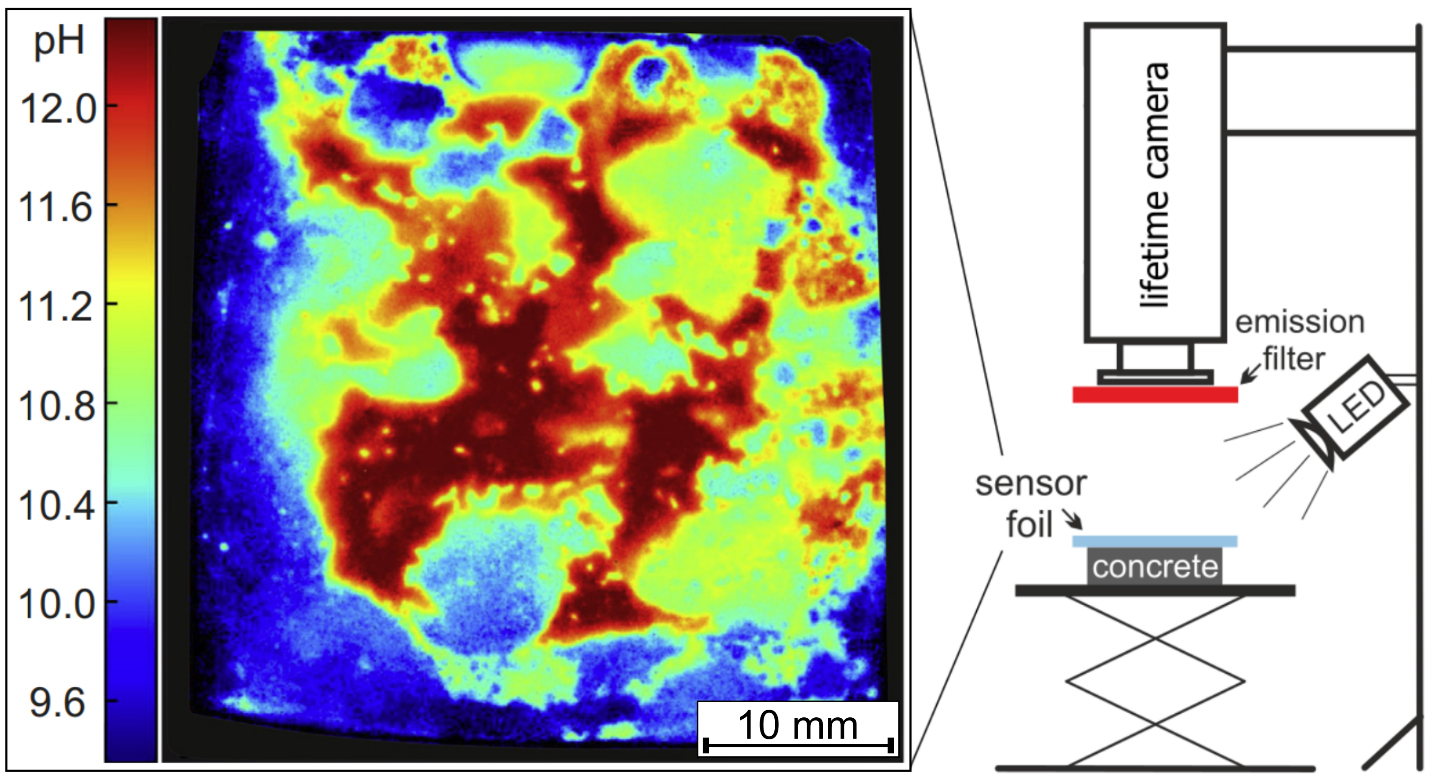TU Graz researchers want to fundamentally improve concrete diagnostics

Additional pictures for download at the end of the text
Whether crumbling tunnel walls, cracks in concrete facades or porous bridge piers, according to statistics from the National Association of Corrosion Engineers (NACE), damage to concrete structures caused by various environmental influences accounts for several billion euros worldwide every year. In close cooperation with the Austrian Society for Construction Technology (ÖBV) researchers at TU Graz want to contribute to the solution of this global economic problem.
In the LumAConM (high-resolution luminescent analyses of construction materials) project, the consortium is working on a new, simple and cost-effective method that enables a detailed assessment of the condition of concrete structures on site as well as laboratory measurements with unprecedented precision for the first time. This enables the service life, as well as any problem areas, to be assessed much more quickly and precisely than is possible with currently available methods of analysis. The researchers also hope that the new method will provide them with a better understanding of the course of essential corrosion processes. "This knowledge enables targeted and cost-effective refurbishment and is essential for the development of new, sustainable and durable materials," explains Florian Mittermayr, researcher at the Institute of Technology and Testing of Construction Materials at TU Graz.
Innovative sensor material as basis
Optical-chemical sensor technology forms the basis for the new process. This highly advanced, optical measurement analysis has so far been used primarily in biotechnology and medical technology. "We now want to use the tool to assess the condition of concrete infrastructure and thus develop a completely new generation of sensors for the construction industry," says Bernhard Müller, chemist at the Institute of Analytical Chemistry and Food Chemistry.
An example of this is an imaging measurement system implemented at TU Graz for the quantitative determination of the pH value in cement-based materials – a parameter that usually correlates directly with corrosion damage. The measuring system consists of a plastic film with a swellable (i.e. water-absorbent) polymer layer containing an indicator dye and a reference dye. The size of the sensor foil can be adapted to the size of the sample to be examined. The wet film is applied to the sample and the pH distribution images are then generated with the aid of a special camera. This technique has already been able to detect changes in the pH value in various building materials very accurately and to characterise corrosion damage in great detail. In the LumAConM project, the measurement system is now to be further developed by the end of 2022 and will result in a versatile measurement technology.
Extensive application possibilities
On the one hand, the researchers want to expand the measuring system to include other parameters, such as chloride. This would enable for the first time the combined determination of chloride concentration and pH directly on site at concrete structures. Chloride attacks, caused for example by road salt in winter, pose a considerable risk of corrosion for concrete structures (especially for bridges) and are one of the most frequent causes of corrosion worldwide.
On the other hand, the sensor material developed for the films is also to be transferred to other sensor formats. For uneven concrete surfaces, for which the films are not suitable, the team would like to use sprayable sensor particles and thus make the imaging technology available for the common practice of exposing underlying structures on site. At present, the condition is assessed by means of core sampling and complex chloride determination by chloride titration. The researchers also plan to make miniaturized probes based on optical fibers. This would not only enable measurements to be taken on the concrete surface, but would also allow depth profiles to be easily created using drill holes.
Cyrill Grengg from the Institute of Applied Geosciences at TU Graz confirms the enormous potential of the measurement technology: "I think that in the medium to long term, the procedure can replace other, more expensive and more complex investigation methods to a large extent and make quality management in concrete construction much easier."
LumAConM is anchored in the Fields of Expertise "Advanced Materials Science" and "Sustainable Systems", two of the five strategic research core areas of TU Graz.
Cooperation partners:
- TU Graz: Institute of Analytical Chemistry and Food Chemistry (ACFC); Institute of Applied Geosciences (IAG); Institute of Technology and Testing of Construction Materials (IMBT)
- Austrian Society for Construction Technology (ÖBV)
- ÖBB Infrastruktur AG
- ASFiNAG Bau Management GmbH
- Linz Service GmbH
- Wiener Linien GmbH
- Holding Graz AG
- Energie Steiermark AG
- Verband Österreichischer Beton und Fertigteilwerke (VÖB)
- Güterverband Transportbeton
- PyroScience AT GmbH
- Materialprüfanstalt Hartl GmbH
- Nievelt Labor GmbH
- Bautechnische Versuchsanstalt HTL Rankweil
- Palfinger Structural Inspection GmbH
- Vermessung ADP Rinner
Kontakt
Kontakte TU Graz:
Dr. Cyrill GRENGG, BSc MSc | Phone +43 316 873 6366 | cyrill.grengg@tugraz.at
Dr. Florian MITTERMAYR | Phone +43 316 873 7159 | f.mittermayr@tugraz.at
Dr. Bernhard MÜLLER, BSc MSc | Phone +43 316 873 32518 | bernhard.mueller@tugraz.at
Kontakt ÖBV:
Ing. Jürgen SILBERKNOLL | Phone +43 (1) 504 15 95 | silberknoll@bautechnik.pro





